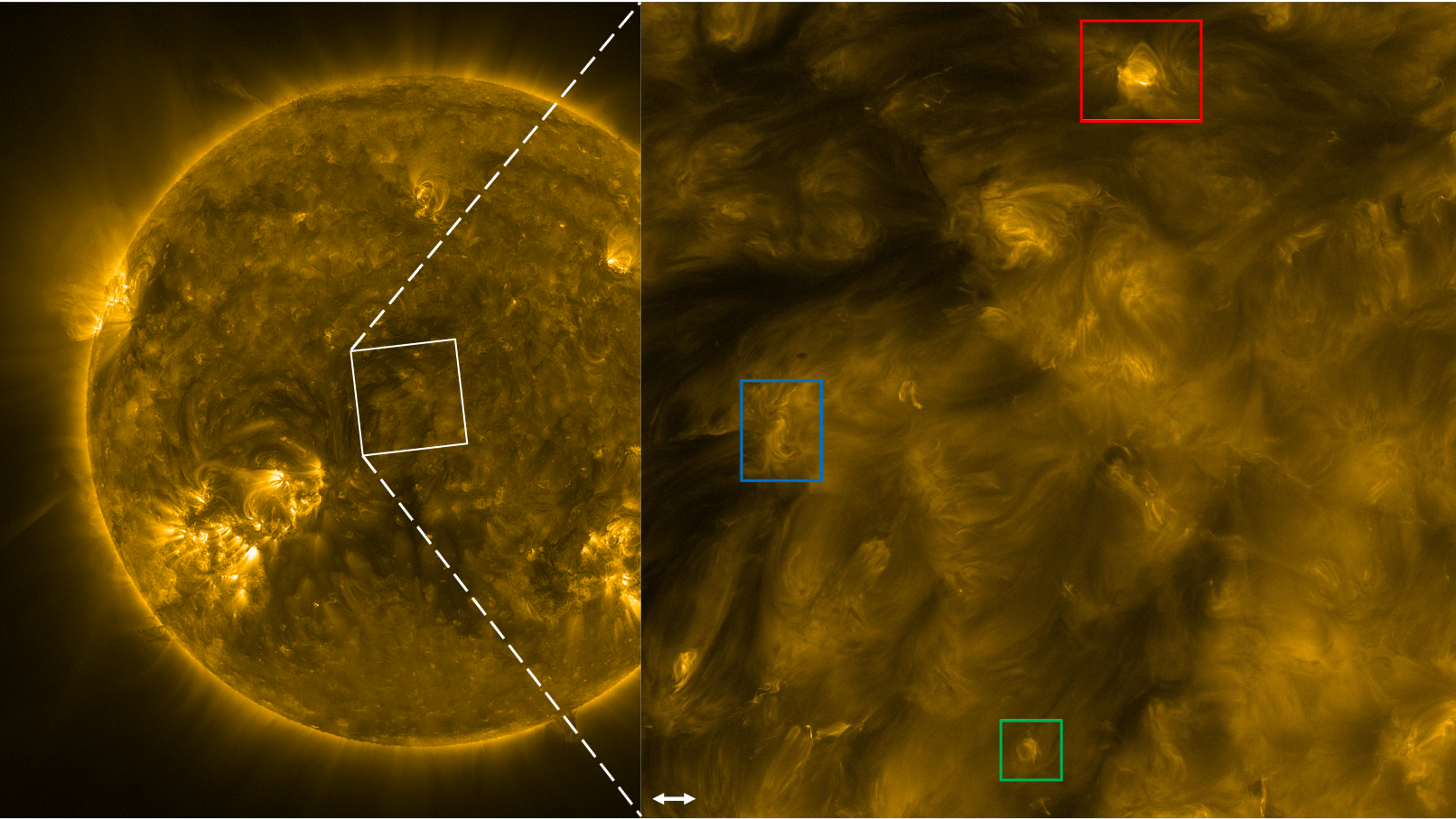
High-frequency magnetic waves surging through the sun may explain why the temperature of our star's atmosphere is 200 times hotter than its surface.
The temperature of the upper atmosphere of the sun, called the corona, can soar to over 2 million degrees Fahrenheit (1.1 million degrees Celsius), while 1,000 miles (1,600 kilometers) closer to the core, the photosphere — the sun's visible surface — simmers at a relatively chilled 10,000 F (5,500 C).
This coronal heating problem arises from the sun's main heat source, which is the nuclear fusion occurring at its core. Stellar models suggest that regions farther from the core should see drops in temperature — something the corona defies by being hotter than the underlying photosphere. This is like moving away from a fire only to find the air becoming hotter.
Scientists have long suspected that magnetic phenomena could play a role in helping the sun's upper atmosphere maintain its physics-defying high temperatures. Now, observations of small and rapid oscillations in magnetic structures in the corona by the European Space Agency's (ESA) Solar Orbiter spacecraft could finally pinpoint exactly what heats up the corona.
Related: Sunspot numbers hit 20-year high, indicating the sun is fast approaching its explosive peak
"Over the past 80 years, astrophysicists have tried to solve this problem and now more and more evidence is emerging that the corona can be heated by magnetic waves," Tom Van Doorsselaere, a plasma astrophysicist at KU Leuven university in Belgium, said in a statement. Van Doorsselaere is a co-author of a new paper detailing the research, published July 17 in the Astrophysical Journal Letters.
Despite being much hotter than the photosphere, the corona is still washed out by light from the underlying photosphere. That means observing it from Earth requires waiting for a lunar eclipse, in which the disk of the moon blocks out the photosphere, or using specialized equipment that replicates the effect.
From its position around 26 million miles (42 million km) from the sun, the Solar Orbiter has no such problems. The ESA spacecraft can use its Extreme Ultraviolet Imager (EUI) telescope operated by the Royal Observatory of Belgium (ROB) to create images of the solar corona with unprecedented resolution.
The spacecraft, currently observing the far side of the sun from our perspective here on Earth, and EUI's Full Sun Imager and its High-Resolution Imager spotted the small magnetic waves traversing the plasma, a broiling hot gas of charged particles that comprises our star, on Oct. 12, 2022.
After EUI revealed these new fast, small-scale oscillations, the team wanted to know if they contributed more energy to coronal heating than previously discovered slower, low-frequency oscillations do. To investigate this, the team conducted a meta-analysis of several previous solar studies.
From this analysis, the scientists concluded that high-frequency oscillations do indeed provide significantly more energy for the heating of the corona than their slower counterparts.
To confirm the link between coronal heating and high-frequency magnetic waves, scientists will continue observing the sun's outer atmosphere with the Solar Orbiter and its instruments.
"Since her results indicated a key role for fast oscillations in coronal heating, we will devote much of our attention to the challenge of discovering higher-frequency magnetic waves with EUI," ROB researcher and EUI principle investigator David Berghmans said in the statement.







